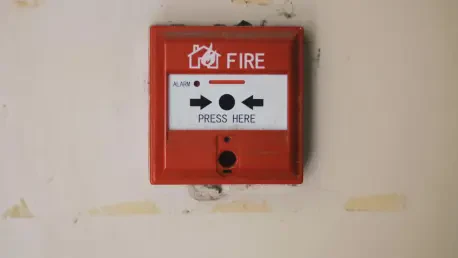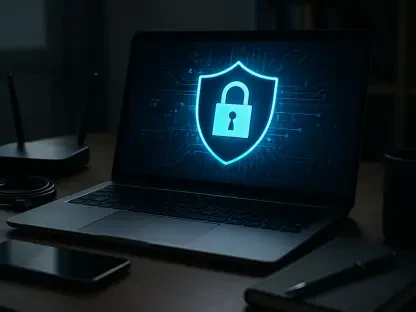In a quiet corner of La Grange, North Carolina, a pressing concern has emerged at North Lenoir High School, where the aging fire alarm system no longer meets current safety standards, posing a potential risk to students and staff, and prompting urgent action. This critical infrastructure, meant to protect hundreds of individuals daily, has become a focal point for the Lenoir County Public Schools Board of Education. The district has issued a public notice seeking qualified contractors to tackle the challenge of repairing or partially replacing the system. The goal is not just to ensure compliance with modern codes but to do so in a way that balances safety with fiscal responsibility. As the deadline for proposals looms, the question remains whether the school can address this issue efficiently, maximizing the use of existing components while meeting stringent regulatory demands. This situation highlights a broader issue faced by many educational institutions: how to maintain safety without straining limited budgets.
Addressing Safety Through Strategic Planning
The initiative to overhaul the fire alarm system at North Lenoir High School reflects a proactive stance by the district to prioritize safety while navigating financial constraints. A detailed request for proposals has been issued, outlining the need for contractors to assess the current infrastructure thoroughly. The emphasis lies on repairing functional components rather than opting for a full replacement, a strategy aimed at minimizing costs. Contractors are expected to conduct a mandatory site inspection to evaluate which parts of the system can be salvaged and integrated into the updated setup. This approach not only seeks to preserve resources but also ensures that any new installations are seamlessly compatible with existing elements. The district has set clear deadlines for these assessments, underscoring the urgency of the project. By focusing on a blend of repair and replacement, the plan aims to deliver a compliant system without unnecessary expenditure, setting a potential model for other schools facing similar challenges.
Beyond the initial assessment, the scope of work for this project is extensive, demanding a high level of expertise from potential contractors. Once the evaluation phase concludes, the selected team must repair or replace components as needed, ensuring every piece meets current safety codes. This includes programming and testing the system to guarantee full functionality under emergency conditions. Additionally, contractors are tasked with providing training for school staff to operate and maintain the updated system effectively. Securing necessary permits and certifications from local authorities is another critical requirement, ensuring no legal or regulatory hurdles remain. The district’s comprehensive approach demonstrates a commitment to long-term safety, recognizing that a functional fire alarm system is only as effective as the people and processes supporting it. This meticulous planning seeks to avoid future disruptions, aiming for a solution that stands the test of time while adhering to strict guidelines.
Navigating the Contractor Selection Process
Selecting the right contractor for the fire alarm project at North Lenoir High School involves a rigorous and transparent evaluation process designed to ensure quality and accountability. Proposals must include detailed qualifications, a clear methodology for balancing repair and replacement, an itemized cost breakdown, and a feasible timeline for completion. References from similar past projects are also required to gauge reliability and expertise. The district has established a multifaceted set of criteria to assess submissions, looking beyond mere cost to consider experience, adherence to project requirements, and the ability to meet deadlines. This structured framework aims to identify a partner capable of delivering a compliant system while maximizing the reuse of existing resources. The emphasis on transparency in this process helps build trust, ensuring that the chosen contractor aligns with the district’s goals for safety and efficiency.
Another key aspect of the selection process is the mandatory site walkthrough, which allows contractors to gain firsthand insight into the current state of the fire alarm system. This step is crucial for crafting informed proposals that accurately reflect the scope of work needed. By requiring this inspection, the district ensures that bidders fully understand the challenges and opportunities presented by the existing infrastructure. Furthermore, the flexibility in submission methods—allowing both electronic and printed proposals—encourages participation from a diverse pool of contractors. The district retains the authority to reject any or all proposals if they fail to meet expectations, a safeguard that prioritizes quality over haste. This careful vetting process, combined with clear communication of expectations, aims to mitigate risks of delays or subpar work, setting the stage for a successful project that addresses the school’s urgent safety needs without compromising on standards.
Building a Sustainable Safety Solution
Reflecting on the efforts to revamp the fire alarm system at North Lenoir High School, it’s evident that the district took a measured and thorough approach to a critical safety issue. The structured timeline, detailed scope of work, and stringent evaluation criteria all contributed to a process that sought to balance compliance with cost-effectiveness. Contractors were held to high standards, ensuring that only those with proven expertise and a clear plan were considered for the task. This methodical strategy likely paved the way for a solution that not only met regulatory demands but also respected the district’s budgetary limitations. The focus on reusing viable components was a testament to a commitment to sustainability, proving that safety upgrades need not always come at an exorbitant cost.
Looking ahead, the next steps for North Lenoir High School involve continuous monitoring and maintenance of the updated fire alarm system to prevent future lapses in safety. Regular training for staff should remain a priority to ensure swift and effective responses in emergencies. Additionally, the district might consider establishing a framework for periodic infrastructure assessments across all schools to preempt similar issues. Sharing lessons learned from this project could also benefit other educational institutions grappling with aging safety systems. By documenting the successes and challenges encountered, the district can contribute to a broader dialogue on efficient safety upgrades, potentially influencing policy or funding allocations for school infrastructure. This forward-thinking mindset ensures that the efforts invested in this project yield lasting benefits, safeguarding students and staff for years to come.








